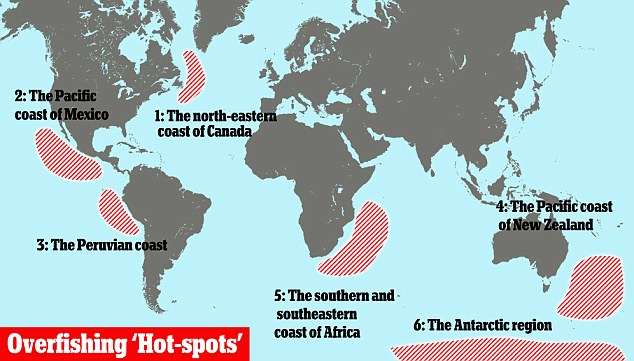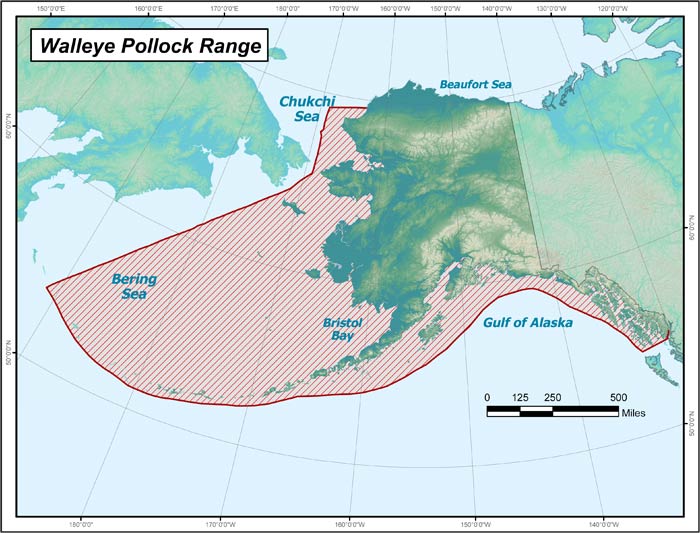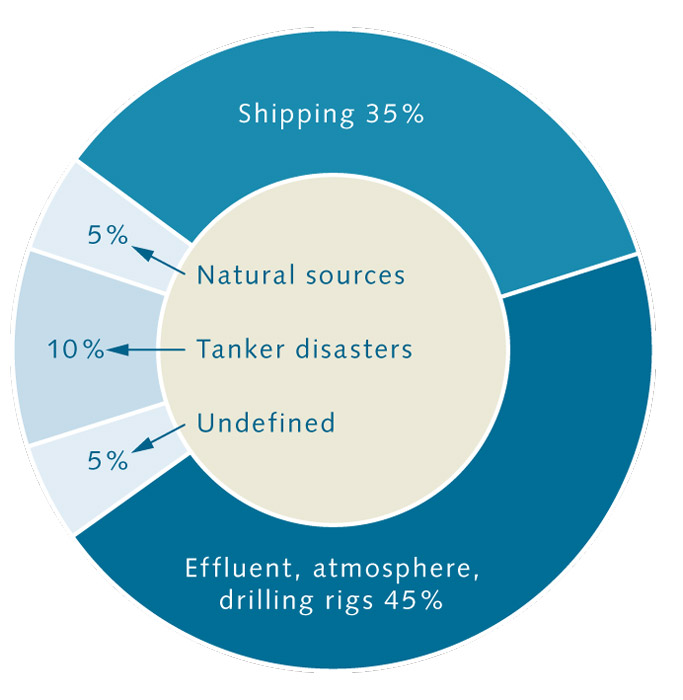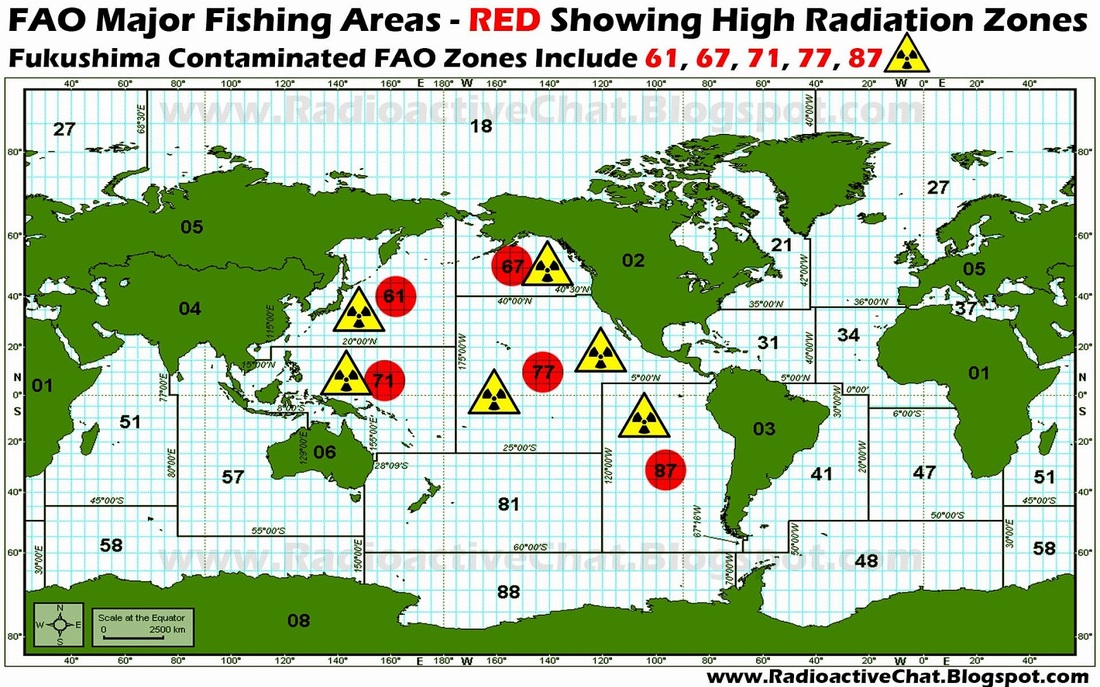The value of oceans
Abiotic resource base
Fossil fuels

Source: http://www.officialbiodiesel.com/kids_stuff/kids_oil.htm
Oil and natural gas are the key resources powering industrial societies. But deposits are dwindling and prices are rising. For this reason oil companies are turning their attention to resources which were previously thought too difficult and expensive to tap: the oil and gas deposits deep in the oceans. Already, more than a third of the oil and gas extracted worldwide comes from offshore sources.
Source: http://worldoceanreview.com/en/wor-1/energy/fossil-fuels/

Source: http://www.matthieuthery.com/energy/fossil-energy/crude-oil/oil-exploitation/
Marine minerals

Source: http://www.immsoc.org/News/IMMS_Soundings/IMMS_News_July2014.html
Natural gas and oil have been extracted from the seas for decades, but the ores and mineral deposits on the sea floor have attracted little interest. Yet as resource prices rise, so too does the appeal of ocean mining. The excavation of massive sulphides and manganese nodules is expected to begin within the next few years.
Source: http://worldoceanreview.com/en/wor-1/energy/marine-minerals/

This diagram shows the process by which vents on the ocean floor spew out a cocktail of minerals. Cold sea water enters cracks in an underwater volcano. It descends hundreds of kilometres into the earth, where it is heated as it nears molten rock (magma). The heated sea water also becomes more acidic, and starts to dissolve elements such as manganese, iron, silicon and other minerals from the surrounding rocks. The heated fluid starts to rise, and is eventually expelled through vents on the sea floor. As the hydrothermal fluid mixes with cold sea water, the metals in solution precipitate as fine-grained particles, which form dark-coloured plumes called black smokers. Some of the material that is precipitated falls on the sea floor, and gradually enriches the surrounding area in metals.
Source: http://www.teara.govt.nz/en/diagram/5517/production-of-mineral-sediments
Renewable energy

Source: http://www.telegraph.co.uk/finance/newsbysector/energy/10503106/UK-missed-chance-of-offshore-wind-jobs.html
Until now, the expansion of renewable energies, such as wind and solar power, has mainly taken place onshore. The energy in the oceans has remained largely untapped. But things are changing. The production of environmentally friendly energy from the oceans is now being promoted worldwide. Expectations are high. It is hoped that wind, waves and ocean currents will meet a substantial share of the world’s electricity needs.
The oceans are teeming with energy. Tidal forces move immense masses of water. Strong winds build up mighty waves. Almost 90 per cent of global wind energy is contained in the turbulence above the world’s oceans. Wind, waves and currents together contain 300 times more energy than humans are currently consuming. For a long time, this abundance went untapped. In recent years, however, we have begun to harness this energy. The first offshore wind farms were built. Hundreds of power plants have been and are being built to convert ocean current and wave energy to electricity. The key renewable marine energies are:
- Wind energy
- Wave energy
- Tidal energy
- Ocean current energy
- Energy derived from temperature differences at various ocean depths (ocean thermal energy conversion – OTEC)
- Energy derived from the different salt content of freshwater and saltwater (osmotic power)
In theory, these energy resources could easily meet the energy needs of the entire human race. However, only a proportion of their potential can be utilized: many marine regions such as the deep sea are virtually impossible to develop, and the costs of cabling the power to the grid would be prohibitive. Many of the potential locations in coastal areas can be ruled out because they are either reserved for the fishing industry, reserved for shipping, or they are protected areas. All the same, these renewable energies could still meet a significant share of the world’s energy needs in future.
Source: http://worldoceanreview.com/en/wor-1/energy/renewable-energies/
Biotic resource base
Fisheries
Fisheries are harvested for their value (commercial, recreational or subsistence). They can be saltwater or freshwater, wild or farmed. Examples are the salmon fishery of Alaska, the cod fishery off the Lofoten islands, the tuna fishery of the Eastern Pacific, or the shrimp farm fisheries in China. Capture fisheries can be broadly classified as industrial scale, small-scale or artisanal, and recreational.
Source: https://en.wikipedia.org/wiki/Fishery

Source: http://www.ictsd.org/bridges-news/biores/news/identifying-current-and-emerging-fisheries-trade-issues
For decades, the catch from the world’s fisheries steadily increased – with the result that many fish stocks are now classified as overexploited or depleted. Failed fisheries policies and poor fisheries management are to blame for this situation. Short-term profits appear to take priority over the development of a low-impact, sustainable fisheries sector that will remain economically viable in the long term.
Source: http://worldoceanreview.com/en/wor-1/fisheries/
Overfishing

Source: http://www.thegeographeronline.net/oceans-and-their-coastal-margins.html
It is now generally understood when and why fish stocks become depleted. Global demand for fish and the intensity of fishing activity are known to be key factors in this context, but ecological aspects also play an important role. The influencing variables need to be studied in more detail, however, in order to provide a conclusive explanation of the causes of overfishing.

Source: http://worldoceanreview.com/en/wor-1/fisheries/causes-of-overfishing/
Sustainable management – the Alaska pollock fishery

Source: http://www.seafoodsource.com/news/environment-sustainability/alaska-pollock-fishery-re-certified-as-sustainable

Source: http://www.slideshare.net/samuelvwiley/choosing-sustainable-seafood

Source: http://www.adfg.alaska.gov/index.cfm?adfg=walleyepollock.main
There are many stocks of Alaska pollock (Theragra chalcogramma) in the Pacific, five of which are managed in accordance with the US Groundfish Fishery Management Plans (FMPs). These plans contain expert groups’ recommendations on the precise catch volumes that are sustainable for specific species, and are intended to ensure that fishing activity takes place in accordance with the maximum sustainable yield (MSY) principle. On the average, stocks have now already reached almost 80 per cent of the level required for harvesting at MSY. A moderate level of fishing activity takes place, which means that the quantities of fish being withdrawn from the sea are relatively small, and this level may even be less than is strictly necessary. Nonetheless, fishermen are currently still able to harvest approximately 1.1 million tonnes annually, mainly in the Bering Sea and around the Aleutian Islands. The fishermen use nets that are trawled through the water, not dragged along the sea floor. This does much to conserve bottom-dwelling species. Careful selection of nets with appropriate mesh sizes and other technical measures will also help to substantially reduce bycatch.
Source: http://worldoceanreview.com/en/wor-1/fisheries/causes-of-overfishing/sustainable-management-the-alaska-pollock-fishery/

Source: http://www.slideshare.net/samuelvwiley/choosing-sustainable-seafood
Pollution in the ocean
Human society inevitably generates immense amounts of waste arising from the production and utilization of food as well as industrial and consumer goods. A considerable amount of this waste eventually ends up in the oceans. Fortunately, the pollution from oil has been decreasing in recent years. But the increasing load of nutrients and pollutants and general littering of the oceans are a growing cause for concern.
Source: http://worldoceanreview.com/en/wor-1/pollution/

Source: http://www.slideshare.net/stevenheath148/pollution-in-the-oceans?ref=http://www.thegeographeronline.net/oceans-and-their-coastal-margins.html
Over-fertilization of the seas

Source: http://www.slideshare.net/stevenheath148/pollution-in-the-oceans?ref=http://www.thegeographeronline.net/oceans-and-their-coastal-margins.html
Rivers convey agricultural nutrients and untreated wastewater to the oceans. In many areas this causes a massive proliferation of algae. In some regions entire habitats are altered. Efforts to curtail the flood of nutrients have been successful in some parts of Europe, but worldwide the situation is growing worse.

Eutrophication stimulates the growth of algae, which are sometimes pounded to foam in the surf, as seen here on the German North Sea coast.

Over-fertilization of the seas usually first becomes apparent with the appearance of copious amounts of green algae. Prior to the start of the Olympic sailing competition in Qingdao in 2008, the algae had to be removed from the water surface by hand.
Source: http://worldoceanreview.com/en/wor-1/pollution/over-fertilization/
Litter
Every year, large amounts of litter enter the sea. As plastics are particularly durable, the mass of plastic debris in the world’s oceans is steadily increasing – often with fatal consequences for countless sea creatures. Microscopic breakdown products from plastics, which scientists have only recently started to study in detail, may also pose a threat. Although the problem has existed for some time, there is still no effective strategy in place to turn the tide on marine litter.
Top ten marine debris items:
- Cigarettes/ cigarette filters
- Bags (plastic)
- Food wrappers/ containers
- Caps/lids
- Beverage bottles (plastic)
- Cups, plates, forks, knives, spoons (plastic)
- Beverage bottles (glass)
- Beverage cans
- Straws, stirrers (plastic)
- Bags (paper)

The amount of litter in the oceans is constantly increasing. Much of it degrades very slowly. Plastic bottles and nylon fishing line are particularly durable. Although many plastics break down into smaller fragments, it will take decades or even centuries (estimated timescales) for them to disappear completely.
Impacts on people
For a long time, marine litter was regarded as a purely aesthetic problem. Only coastal resorts attempted to tackle the problem by regularly clearing debris from the beaches. However, as the amount of litter has increased, so too have the problems. It is difficult to put a precise figure on the economic costs of oceanic debris, just as it is difficult to quantify exactly how much litter there is in the sea. In one study, however, British researchers showed that marine litter has very serious implications for humans, particularly for coastal communities. The main impacts include:
risks to human health, including the threat of injury from broken glass, syringes from stranded medical waste, etc., or from exposure to chemicals;
rising costs of clearing stranded debris from beaches, harbours and stretches of sea, together with the ongoing costs of operating adequate disposal facilities;
deterrent effect on tourists, especially if sections of coastline are notoriously polluted. This results in loss of revenue from tourism;
damage to ships, such as dented hulls and broken anchors and propellers from fouling by floating netting or fishing line;
fishery losses: torn nets, polluted traps and contaminated catches; if nets become choked with debris, the catch may be reduced;
adverse effects on near-coastal farming: numerous items of plastic waste and other forms of wind-borne marine debris may be strewn across fields and caught on fences; livestock may be poisoned if they ingest scraps of plastic or plastic bags.
Impacts on animals
The presence of such large quantities of debris has a catastrophic effect on marine fauna. Seabirds such as the various species of albatross (Diomedeidae) or the Northern fulmar (Fulmarus glacialis) pick up fragments of plastic from the sea surface, ingest them and then often pass them to their chicks in regurgitated food. It is by no means uncommon for birds to starve to death as their stomachs fill with debris rather than food. Analyses of the stomach contents of seabirds found that 111 out of 312 species have ingested plastic debris. In some cases, up to 80 per cent of a population were found to have ingested debris. In another study, the stomach contents of 47 harbour porpoises (Phocoena phocoena) from the North Sea were investigated. Nylon thread and plastic material were found in the stomachs of two of these individuals. In other cases, the debris itself can become a death trap. Dolphins, turtles, seals and manatees can become entangled in netting or fishing line. Some of them drown; others suffer physical deformities when plastic netting, fishing line or rubber rings entwine the animal’s limbs or body, inhibiting growth or development. There is another threat associated with plastic debris as well: almost indestructible and persistent in the environment for many years, plastic items drift for thousands of miles and therefore make ideal “rafts” for many marine species. By “hitch-hiking” on floating debris, alien species can cross entire oceans and cover otherwise impossibly long distances. Plastic debris thus contributes to the spread of invasive species to new habitats, and can even destabilize habitat equilibrium in some cases

In the Great Pacific Garbage Patch between Hawaii and North America, vast quantities of litter are constantly circulating. Many plastic items are transported thousands of kilometres across the sea before they are caught up in the gyre.
Source: http://worldoceanreview.com/en/wor-1/pollution/litter/
Oil
Oil pollution is one of the most conspicuous forms of damage to the marine environment. Oil enters the seas not only as a result of spectacular oil tanker or oil rig disasters, but also – and primarily – from diffuse sources, such as leaks during oil extraction, illegal tank-cleaning operations at sea, or discharges into the rivers which are then carried into the sea. The designation of marine protected areas, increased controls and the use of double hull tankers are just some of the measures now being deployed in an effort to curb marine oil pollution.
Oil enters the sea along various pathways. Around one third comes from regular accident-free shipping operations


In the sea, oil is modified and broken down in a variety of ways. Generally, when an oil spill occurs, the oil immediately forms large slicks which float on the water’s surface. A proportion of the oil evaporates or sinks, but other oil constituents are broken down by bacteria or destroyed by solar radiation. Finally, the oil solidifies into clumps (tarballs), which are more resistant to bacterial breakdown.
How oil damages habitats
It is generally not possible to protect an entire coastline from the effects of a major oil spill, so the authorities have to set priorities for their oil spill response. It goes without saying that designated conservation areas, such as national parks, or sensitive marine areas are particularly worth protecting and are given high priority in clean-up efforts. As a rule, however, these areas are too large to be protected in their entirety. Here, sensitivity rankings can facilitate the oil spill response: these describe the general sensitivity of the various shoreline types to oil pollution. In exceptional cases, it may even be possible to define “sacrificial areas” which are less important from a nature conservation perspective and where no protective measures are taken. When defining these sensitivity rankings, one factor which is taken into account is whether the section of coastline is a “high-energy” area, e.g. with rocky or sandy shores that are subjected to direct wave action, or whether they are relatively calm, “low-energy” areas such as the Wadden Sea, which are protected by sandbanks or offshore islands. Of course, within the major habitats described here, other more detailed sensitivity rankings can be defined for a targeted oil spill response.
EXPOSED ROCKY AND SANDY SHORES: Exposed rocky and sandy shores are classed as areas of relatively low sensitivity because the oil deposited by the sea is cleared very swiftly by wave action. Nonetheless, major oil spills can change the composition of biological communities in these habitats over the longer term. In such cases, populations of former dominant species such as crustaceans and molluscs may decline. In rocky crevices, rough gravel and on mussel beds, the oil pollution may persist for many years.
SANDY BEACHES: Here, a different situation applies. The extent to which the oil penetrates the ground and how long it remains there depend primarily on the structure of the beach. An extensive beach with little surf and with branching channels, for example, is far more vulnerable than a steep beach with a less diverse structure. Coarse-grained sediment facilitates oil penetration, makes the clean-up process more difficult, and increases the risk of follow-up damage from re-surfacing oil. Beach areas used as habitats or breeding sites by endangered species, such as turtles, are classed as particularly sensitive.
CORAL REEFS: Corals are also highly sensitive to oil pollution. Various studies show that damaged coral reefs are very slow to regenerate. Oil pollution can also affect entire communities. For example, less sensitive species of algae can colonize oil-contaminated areas which were previously coral habitats. Very little research has so far been undertaken to investigate how oil spills affect the relationship between corals and the many species asso- ciated with them. The linkage between numerous specialized species and the great significance of symbioses within these ecosystems indicate that far-reaching and long-term impacts can be anticipated after major oil spills.
MANGROVES: Mangrove habitats react with particular sensitivity to oil pollution. Here, an oil spill can inflict severe damage on trees and the sensitive organisms living in them and in sediment. This damage is caused by toxic hydrocarbons, but can also occur as a result of oil cover, which shuts off the oxygen and freshwater supply. The regeneration of damaged populations of flora and fauna is a lengthy process. As the harmful hydrocarbons are removed from sediment very slowly in mangroves, habitat recovery is further delayed.
SOFT SUBSTRATES AND SANDBANKS: Sections of coastline with soft substrates and sandbanks, such as the Wadden Sea on the North Sea coast, are classed as particularly or highly sensitive. The organisms living at great density in and on the sediment provide the basic food supply for fish and birds. Although in most cases, very little oil penetrates the often water-saturated fine pores of muddy sediment, these areas are generally densely populated by burrowing organisms whose activities cause the oil to sink deeper into the ground. On the other hand, the stirring and mixing of sediment by these organisms – known as bioturbation – also help to break down the oil by churning up the sediment, exposing deeper layers to the air and bringing oily sediment to the surface. As this activity promotes a healthy oxygen supply, the oil is then broken down more quickly by bacteria. If the organisms in the sediment have been killed by the oil, however, bioturbation ceases and the oil remains in the ground for longer, causing long-term habitat damage.
SALT MARSHES: Very few studies have been carried out to investigate how oil affects invertebrate organisms found in salt marshes, such as insects and worms. The vegetation, however, can suffer long-term damage from oil pollution, with major implications for breeding and resting birds in the salt marshes, whose plumage may be covered in oil or which could lose their basic food supply.
Source: http://worldoceanreview.com/en/wor-1/pollution/oil/
Radioactive material

Source: http://www.thegeographeronline.net/oceans-and-their-coastal-margins.html

Source: http://e360.yale.edu/content/images/0411-cs137-concentrations.html
Toxic waste
The Problem
- Toxic pollution occurs when synthetic chemicals are discharged or natural chemicals accumulate to toxic levels in the environment, causing reductions in wildlife numbers, degrading ecosystem functions and threatening human health.
- Among the many naturally-occurring substances involved are certain metals (such as mercury, lead, chromium) and petroleum. Synthetic, or human-made, chemicals include, among others, pesticides, PCBs and dioxins. A large group of these, known collectively as persistent organic pollutants, or POPs, are complex compound-all containing hydrogen and carbon and many containing chlorine-that persist unchanged in the environment for long periods. Human activities are also responsible for environmental contamination by radioactive substances, some of which are natural and some synthetic.
- Once in the living food chain, many of these substances are accumulated to ever-higher concentrations in the tissue of the animals that consume them. Some of the known effects on marine animals include cancer, lesions, genetic and developmental deformities, behavior abnormalities, reproductive failures, sex changes, and death.
- Because water is such an effective solvent, much toxic pollution that humankind generates eventually ends up in the ocean. After entering the marine environment, many chemical substances concentrate in the sediment and the sea surface microlayer.
- Humans may be exposed to toxic pollution from a variety of sources, including airborne emissions and contaminated water or food. Except in the case of workers who are exposed to large amounts of a single toxic material, the cumulative effects from all sources are the most problematic for human health.
- Among documented and postulated maladies are reproductive problems, declines in fertility, developmental and learning problems, and suspected links to cancer.
The Causes
- Toxic pollution occurs as a result of a variety of human activities. Industries and sewage treatment plants discharge wastes which contain toxic substances directly into waterways, These direct pipeline discharges are called point sources.
- Air emissions from manufacturing; from fuel combustion in cars and other motors, homes and buildings; and from power plants contain numerous chemicals that drift in the atmosphere and rain down upon or absorb into the surface of the ocean and other bodies of water. Plutonium processing plants, nuclear power plants, nuclear submarines and nuclear waste dumps are the sources of radioactive contamination. Incinerated, spilled and discharged wastes can also cause marine pollution.
- Toxic pesticides are dispersed through the environment by rain running off chemical-treated land and flowing into lakes, rivers, estuaries and coastal waters. Other sources of pollutants in rainwater run-off include material from numerous human-made surfaces-roads and parking lots, city streets and buildings, cars and houses. These sources of run-off pollution are called non-point sources.
- Household cleaning and disinfecting products are flushed into sewage systems and out through treatment plant discharge, or are washed from property and septic tanks into groundwater and streams.
- Oil drilling and transport, mining and maritime operations all result in the accidental introduction of significant amounts of toxic materials into the marine environment, as does leakage from storage tanks and pipelines, and seepage from waste dumps.
Sources: http://www.seaweb.org/resources/briefings/toxic.php

No comments:
Post a Comment